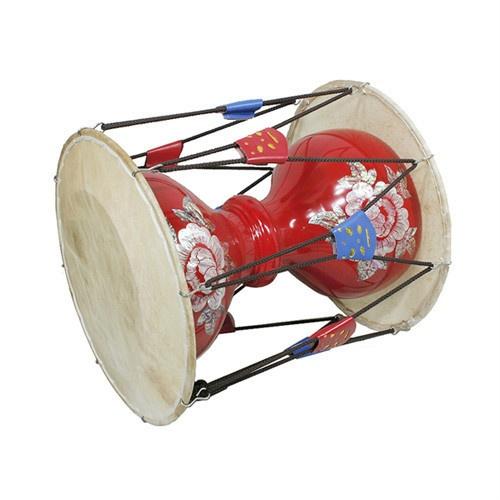changgu overview
 There are three common types of long drums (pinyin: cháng gǔ), one is the Korean long drum, the other is the Yao nationality long drum, and the other is the Fuzhou wolf string. The Korean long drum is mainly popular in Yanbian Korean Autonomous Prefecture of Jilin Province and other areas inhabited by Koreans, also known as Fugu. The Yao nationality long drum has been circulated in the Song Dynasty. It is mostly made of Yanzhi wood with fine craftsmanship. It is mainly used for dance accompaniment. Fuzhou wolf string, also known as Fuzhou long drum, is a traditional Fujian folk percussion instrument, which is mostly used in Fujian folk music.
There are three common types of long drums (pinyin: cháng gǔ), one is the Korean long drum, the other is the Yao nationality long drum, and the other is the Fuzhou wolf string. The Korean long drum is mainly popular in Yanbian Korean Autonomous Prefecture of Jilin Province and other areas inhabited by Koreans, also known as Fugu. The Yao nationality long drum has been circulated in the Song Dynasty. It is mostly made of Yanzhi wood with fine craftsmanship. It is mainly used for dance accompaniment. Fuzhou wolf string, also known as Fuzhou long drum, is a traditional Fujian folk percussion instrument, which is mostly used in Fujian folk music.The Yao nationality long drum, a thin-waisted drum spread in the Yao nationality area, is mainly used for dance accompaniment. As early as the Song Dynasty in the 12th century, the Yao people were able to make long drums. But they don't give each other away, they don't sell, and they all have them in Zhaizhai. In ancient times, it was called "Naogu" or "Bungu". In the Ming and Qing dynasties, the name of the drum was still used, and some Yao villages still call the long drum the drum.
The Yao nationality long drum is finely made and has a beautiful appearance. It is mostly made of Yanzhi wood. The drum body is in the shape of a long cylinder, about 83 cm long. It is made of a whole piece of wood. The face is empty, covered with sheepskin or mountain rabbit skin. The whole body is painted with pictures such as clouds, sun and moon, dragons and phoenixes, flowers and plants or birds and beasts.
Wolf skewers are also known as wolf tents, wolf sticks (langzhang), Fuzhou drums, Fuzhou long drums, Fujian long drums, long sticks, wolf drums, and Pongpeng drums. It is a traditional Fujian folk percussion instrument. Like the Korean long drum and the Zhuang bee drum, it is the remains of ancient Chinese slender-waisted drums. It is often used with Fujian Opera accompaniment and Fujian folk instrumental ensemble "Cage Blowing", "Fuzhou Tea Pavilion Shifan Music", "Zhangzhou Nanci", "Shiquan Tune" and other Fujian folk music.
Among the Yao folk dances, the "Changing Drum" is the most famous. The dancer hangs the drum obliquely at the waist and slaps with both hands, or holds the middle part of the drum with the left hand, slaps with the right hand, and dances while hitting. The long drum is not only an accompaniment instrument, but also a dance prop. In Yao villages, every year on October 16th, people will dance in ecstasy with long drums.
- Pinyin:cháng gǔ
- nickname:Fu drum
- Origin:Goguryeo
- Applied discipline:Musicology, Music Performance, etc.
overview of other similar instruments
- sanyanxiao overview
- Daguangxian overview
- Leiqin overview
- hahao overview
- yandundagu overview
- Han Xiaozheng overview
- Fang Xiang overview
- guanzi overview
- zhuqin (Dao Qin) overview
- zhuiqin overview
- bangzi overview
- three-stringed piano overview
- Gehu overview
- xiao overview
- xiaokonghou overview
- Konghou overview
- Sheng overview
- suona overview
- hulusi overview
- gushao overview
 渝公网安备 50010702504639号
渝公网安备 50010702504639号